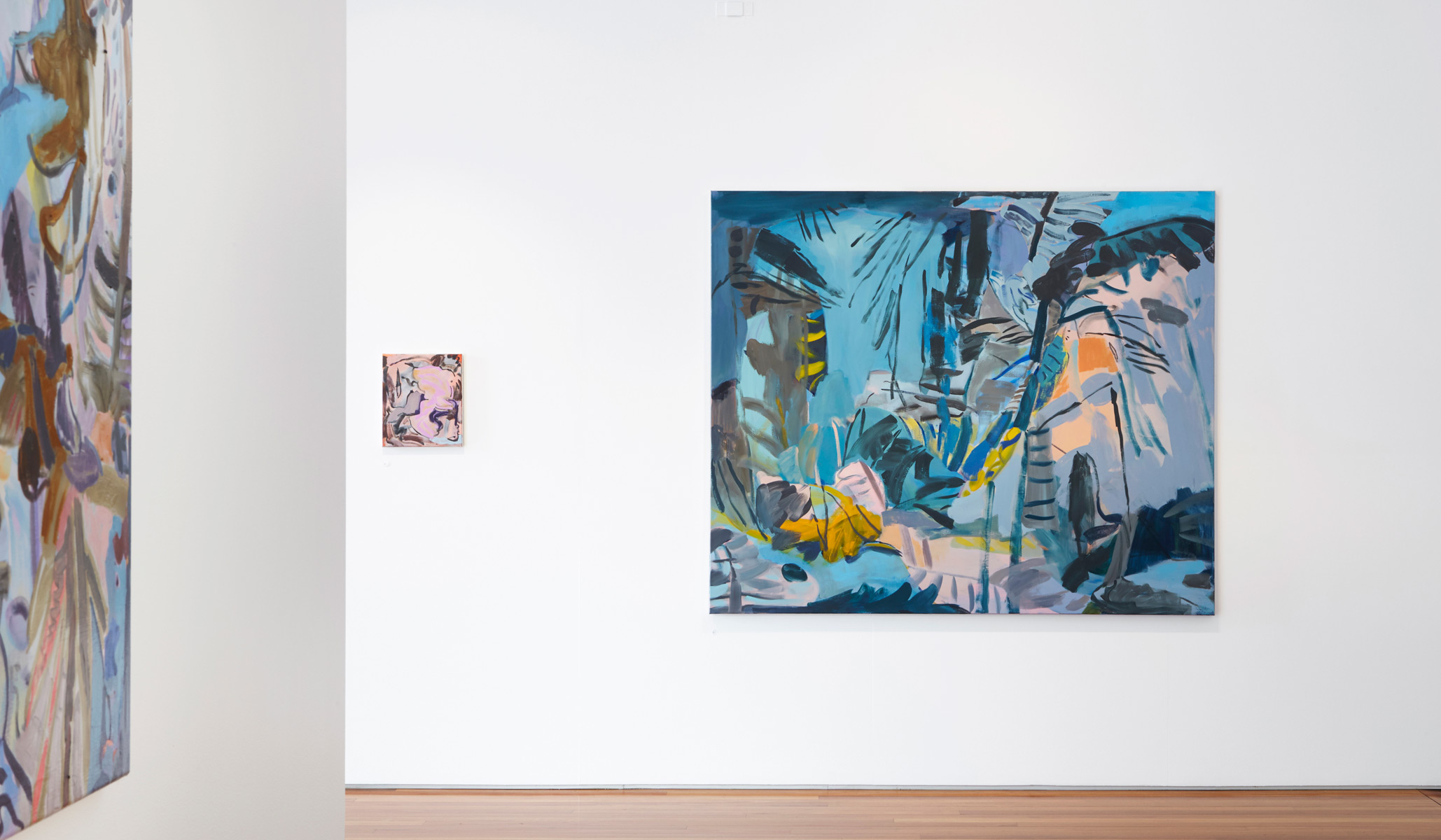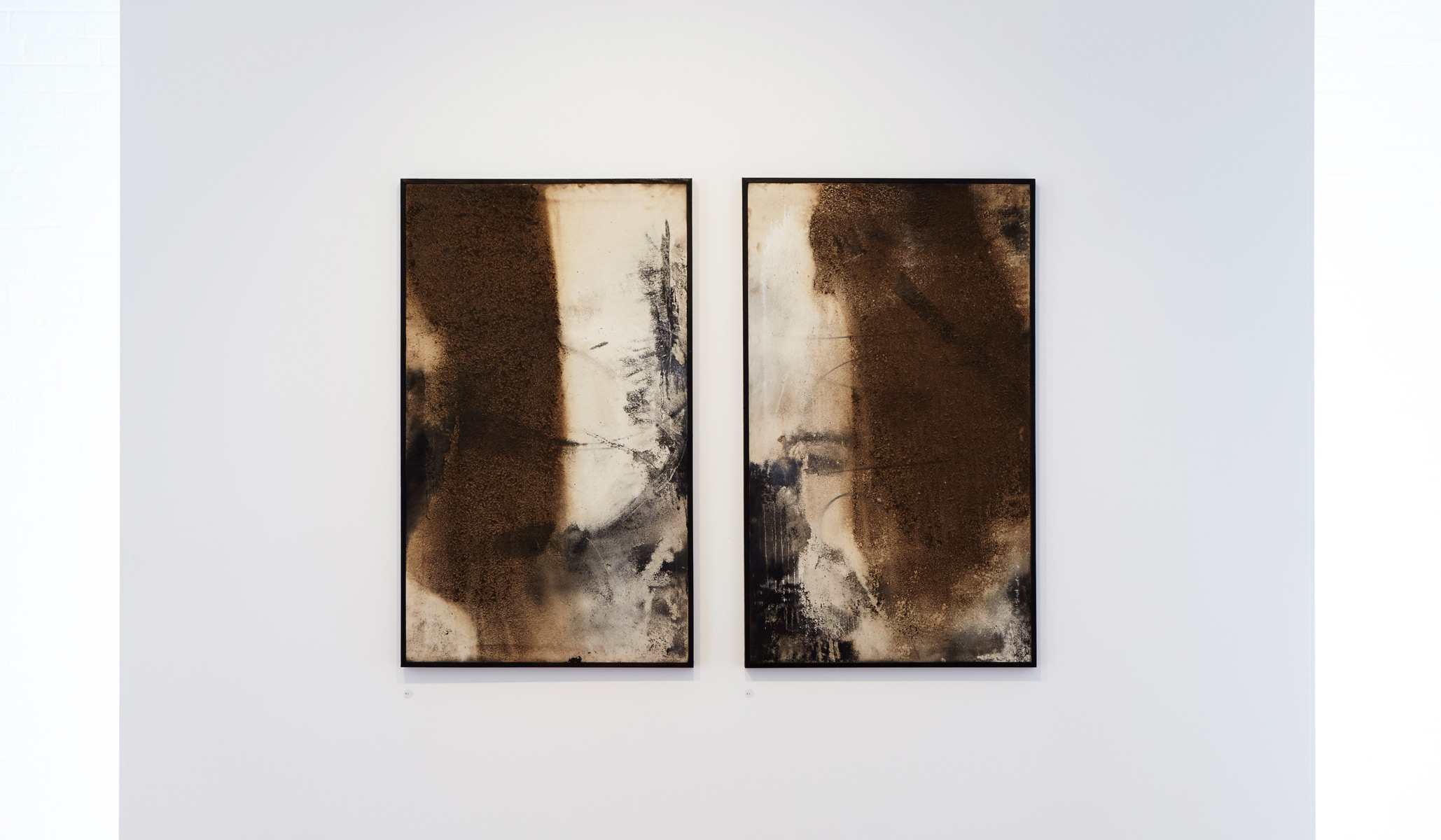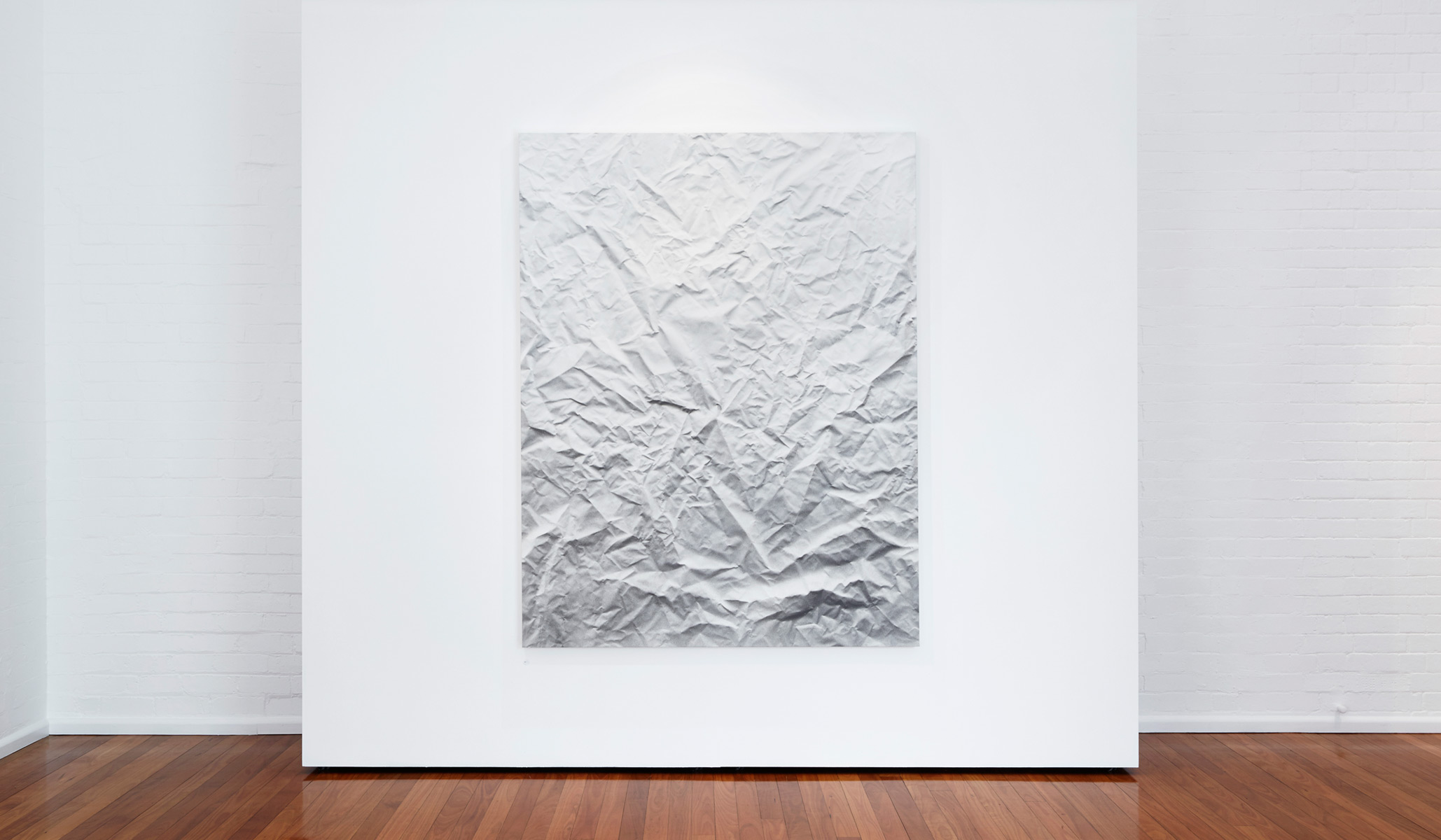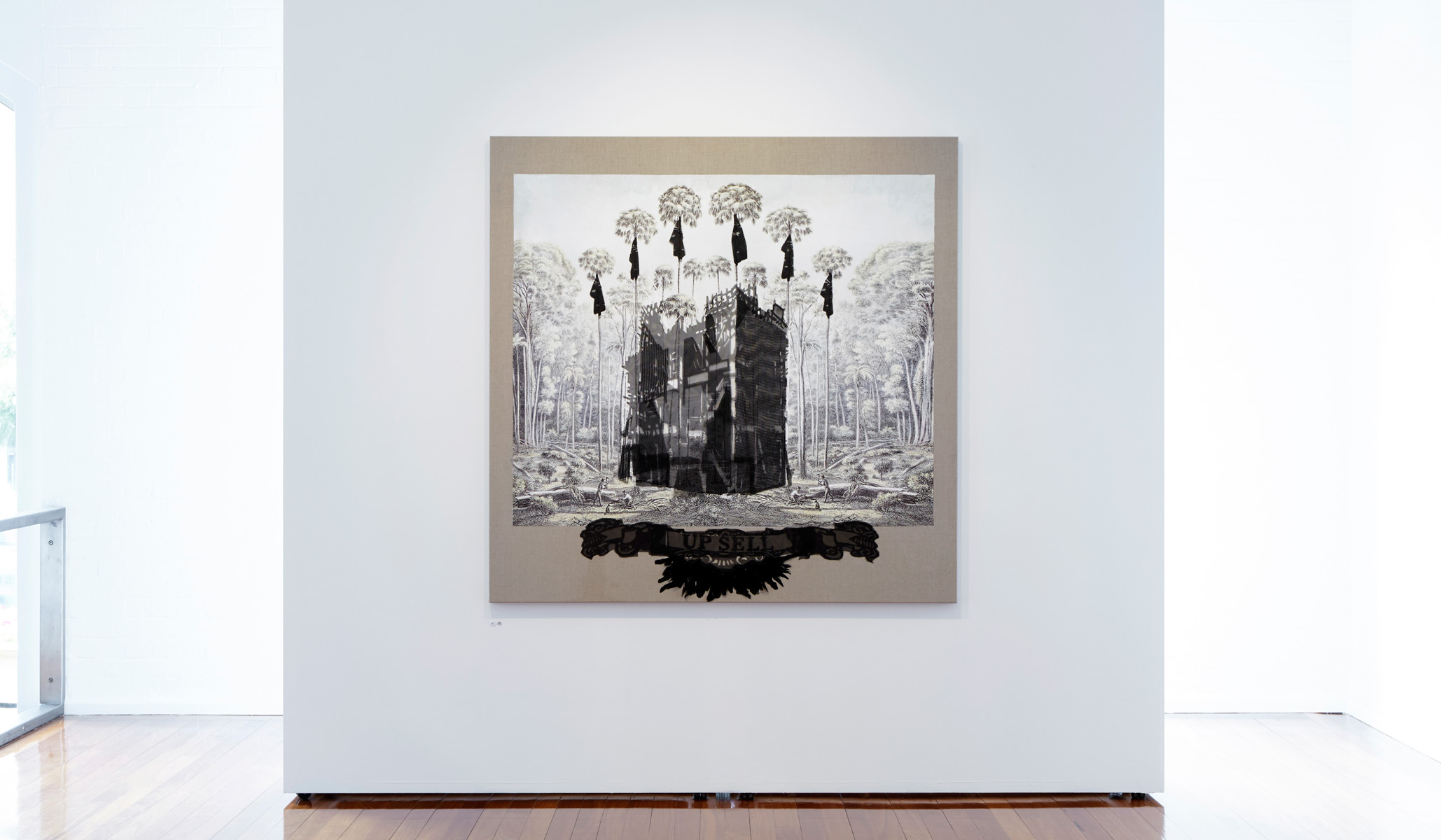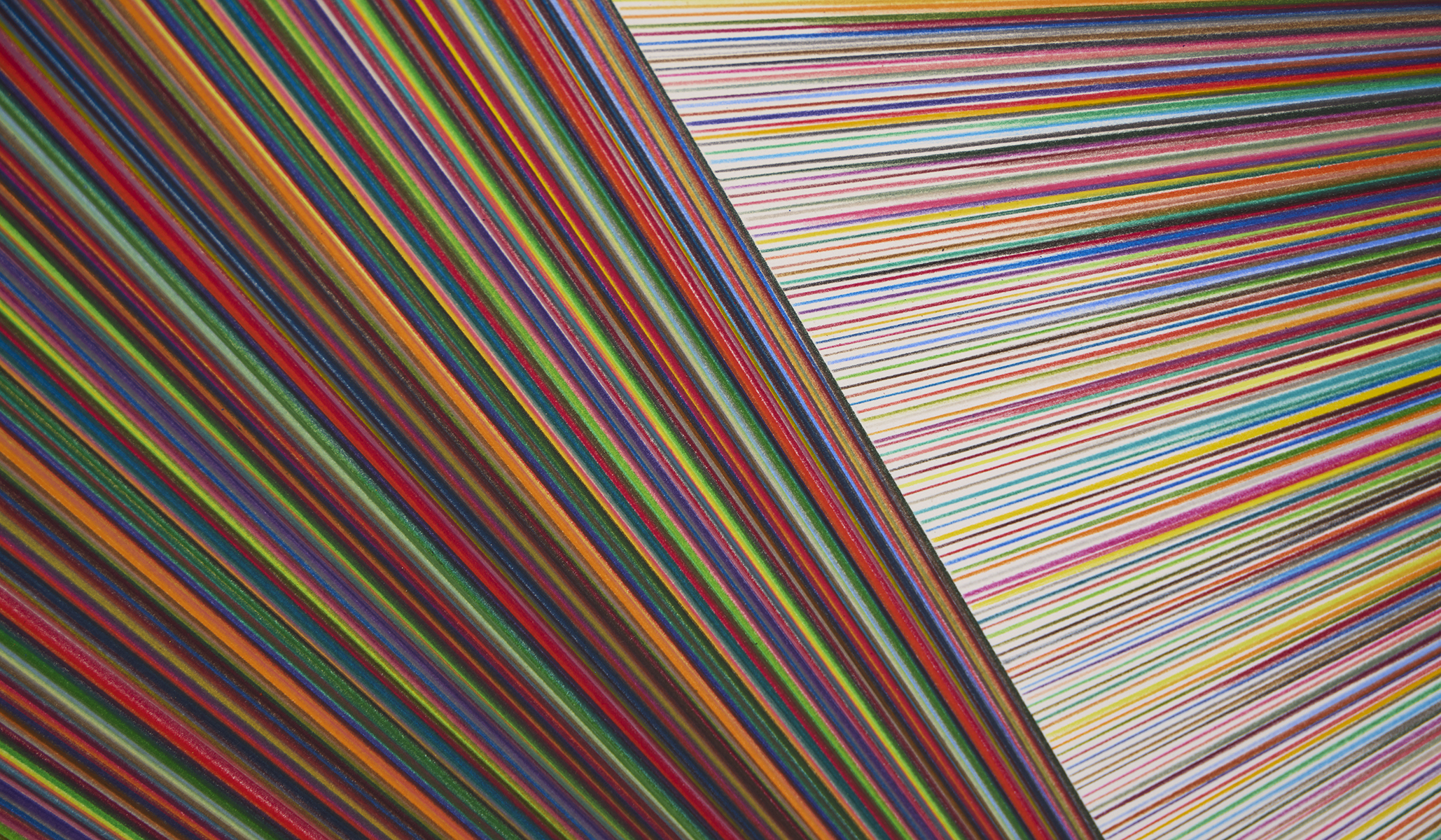Exhibition
A ‘view’ can be understood as landscape, as an act of looking, or a philosophical proposition or opinion. Four artists whose art ranges across these approaches come together in View.
SEAN WADEY
Sean Wadey’s painting is as much vested in the terrain of painting as in the natural landscape. His paintings are visual and conceptual conundrums that conjure with our perception. His works are illusionistic, with apparently tactile, low relief, shallow and recessive forms – yet the surface is quite flat.
“Topographical”, when used in reference to his painting is not indicative of ‘landscape’, but to the outcome of his process. The artist applies acrylic paint to a smooth coated polyester surface, guiding and choreographing the commercial spray-painting applicator, causing the paint to catch the surface at varying angles. The trajectory of the spray and the play of light inform the ‘mapping’ of the surface and the reading of his meditative, cryptic paintings in his exploration of the idea of painting as a sculptural object, and the product and process of its making.
RYAN McGENNISKEN
Ryan McGennisken similarly analyses the act and outcome of contemporary abstract painting for his gritty, spontaneous, mostly monochrome works that are created ‘alla prima’ all in one go. Sometimes front and back and all over. In perhaps a nod to Modernist art history, his works are seemingly ‘landscapes’ of material and matter.
He paints in the outdoors, integrating non-art materials like dirt and sump oil that are in and of the rural landscape where he lives. He combines found matter with the more usual acrylic paint and canvas and seals the disparate materials in polyurethane for his grainy, horizon-less moonscapes that transcend time and location.
LAURA SKERLJ
Laura Skerlj seeks a ‘siteless’ landscape, a painterly amalgam, a pictorial field redolent of flux. She creates an infinite, ‘all over’ view that is both of, yet also beyond, specific encounters with landscape to incorporate perceptions of the cosmos, the internet as a space, personal experience and mysticism.
Reflecting on the structure of a landscape as a departure in which to consider the mechanics of abstract image making—where elements and forms float in and out of the frame— hers are paintings of gestural immediacy and lyrical colour that focus on presenting phenomena rather than an accurate representation of any specific environment.
The artist describes a process embedded in experimentation and intuition:
“to create a pictorial space that loses track of its origin. Using references taken from photographs, drawings and the Internet, the process of painting ‘hallucinates’ about any original location, pushing it into abstract territory.”
PENELOPE CAIN
Penelope Cain looks through the lens of art history at the impact of land ownership and political and economic power vested in the City. For her form of a ‘contemporary urban sublime’, in part motivated by current development at the Barangaroo site on the Sydney city foreshore, she ruptures a nineteenth-century rendering of Eugene von Guerard’s bucolic rainforest near Wollongong with the scarring of scaffolded skyscrapers under construction. She tellingly titles her works with politicians’ speak for economic and budgetary measures and real estate mantras. She acknowledges the context of nineteenth-century Romanticism, in part a reaction to industrialization occasioning a renewed awe of nature, when wealthier Europeans travelled, ‘commodifying’ the experience of nature, souveniring the views. A ‘sublime’ natural world and architectural ruins were often linked in paintings of the period.
The artist exploits such devices in Cut-backs, and Up sell, linking past, present and future in overlaying skeletal mesh skyscrapers under construction and insinuating a vestigial, ghostly wraith of a building into an image after a lithograph of von Guerard’s lush, picturesque depiction of a Cabbage Tree forest at American Creek near Wollongong. Political and economic impact is implicated in a backdrop of fluttering national flags and Victorian mourning-style embellishments of feathers and beads adorn the works in what the artist expresses as “… pure shaman. The economy of the city manifested as white people’s Dark Magic.”
Barbara Dowse
Senior Curator


